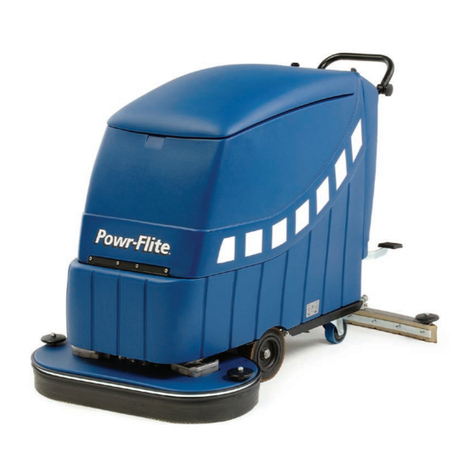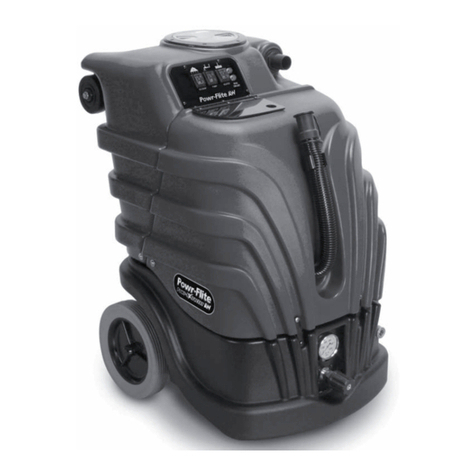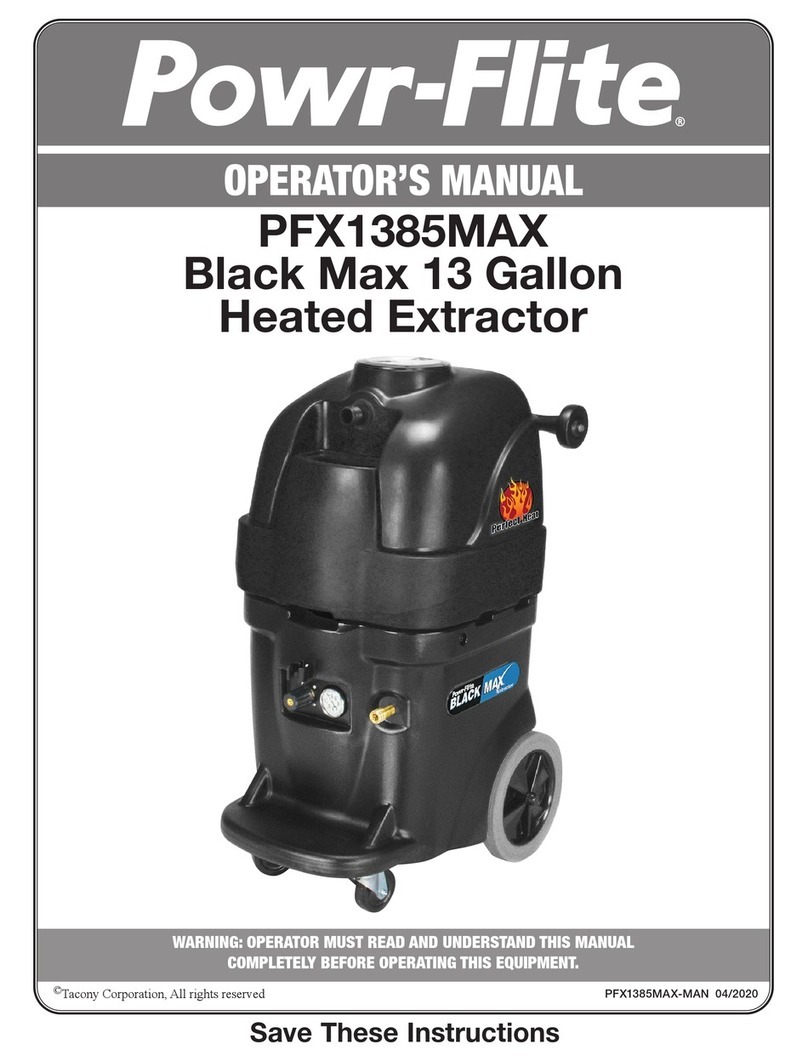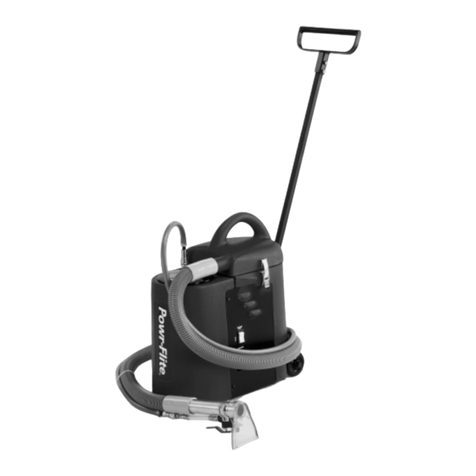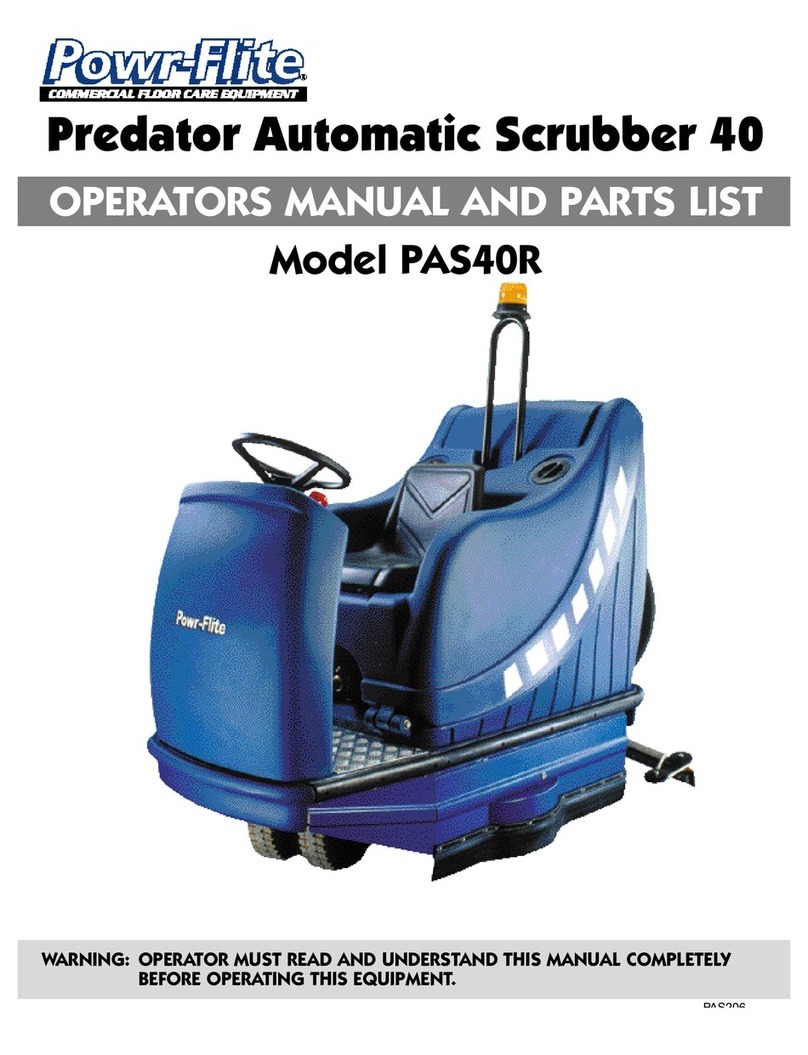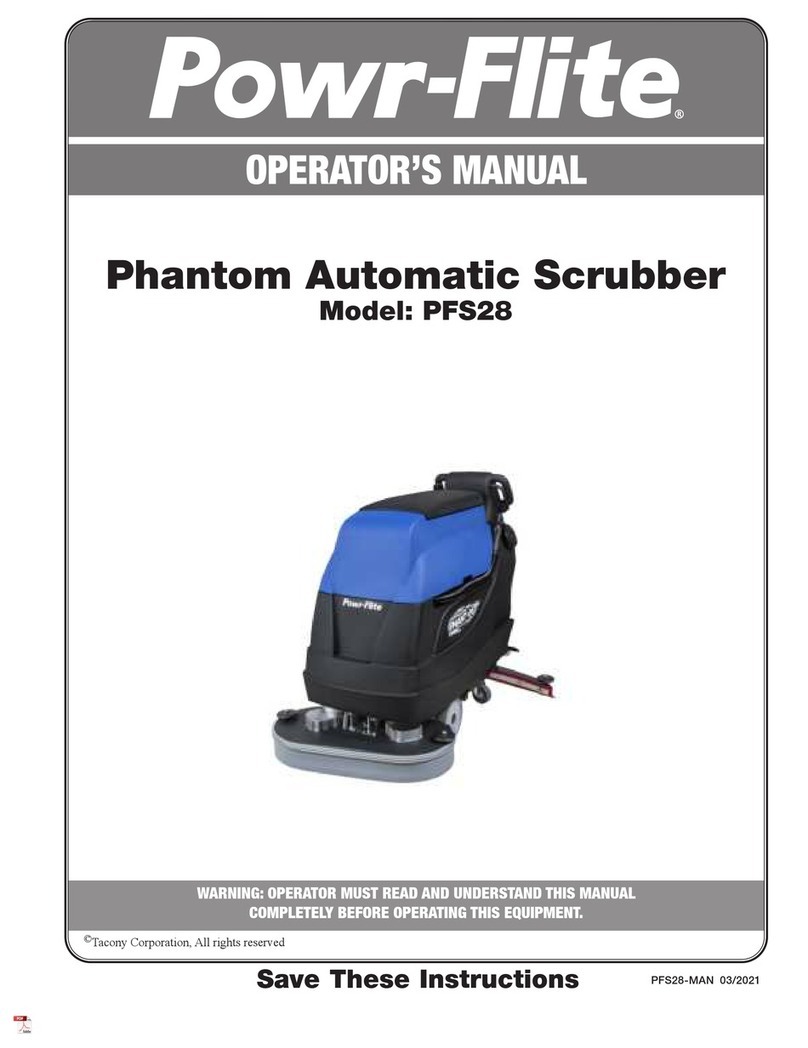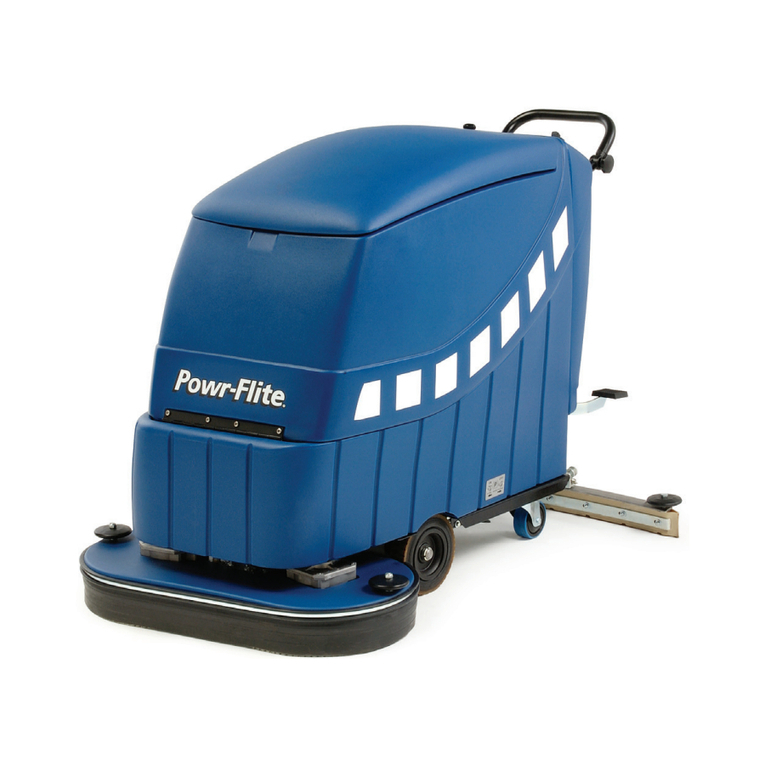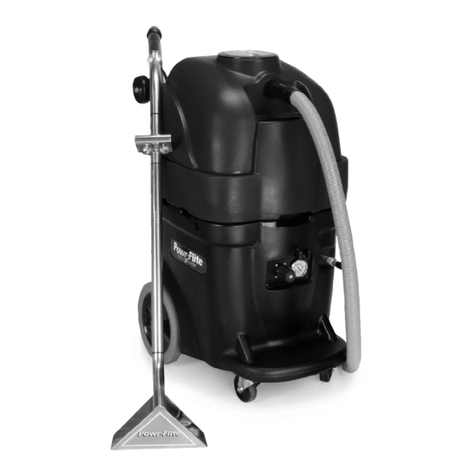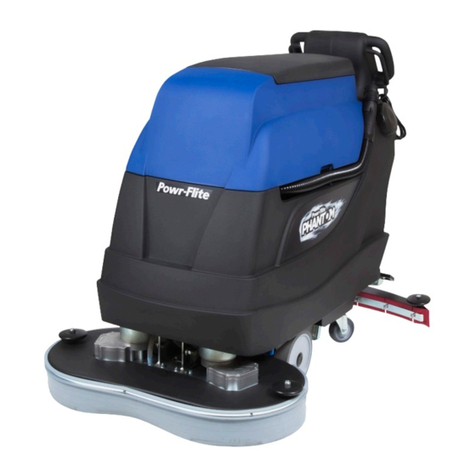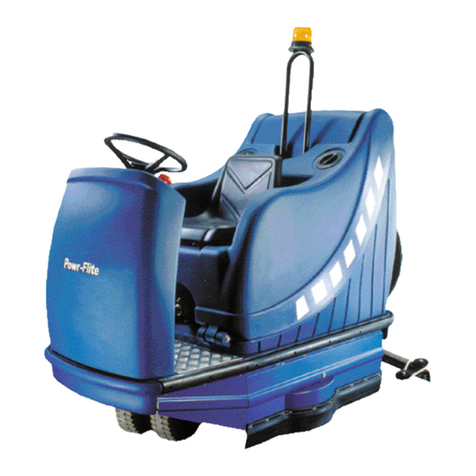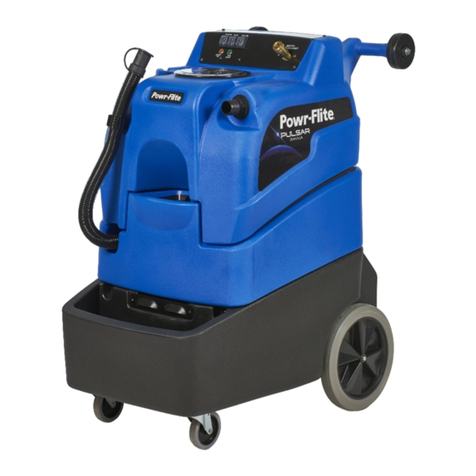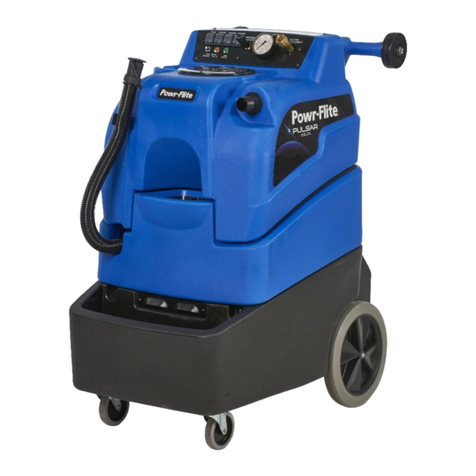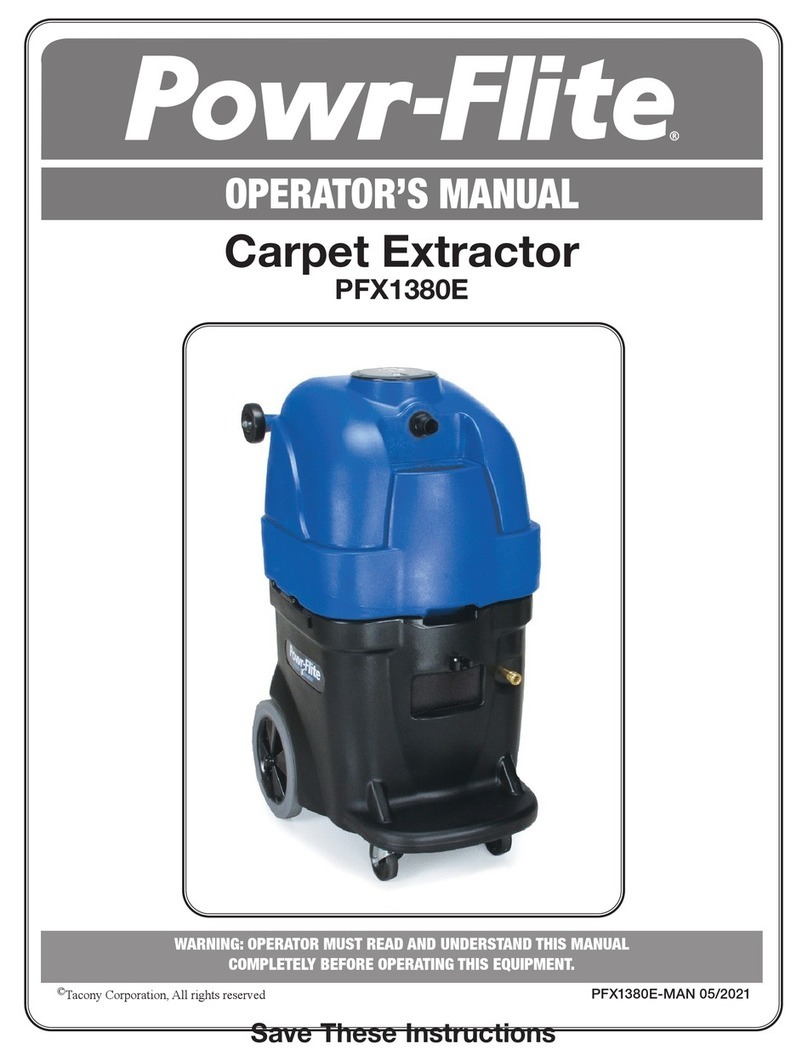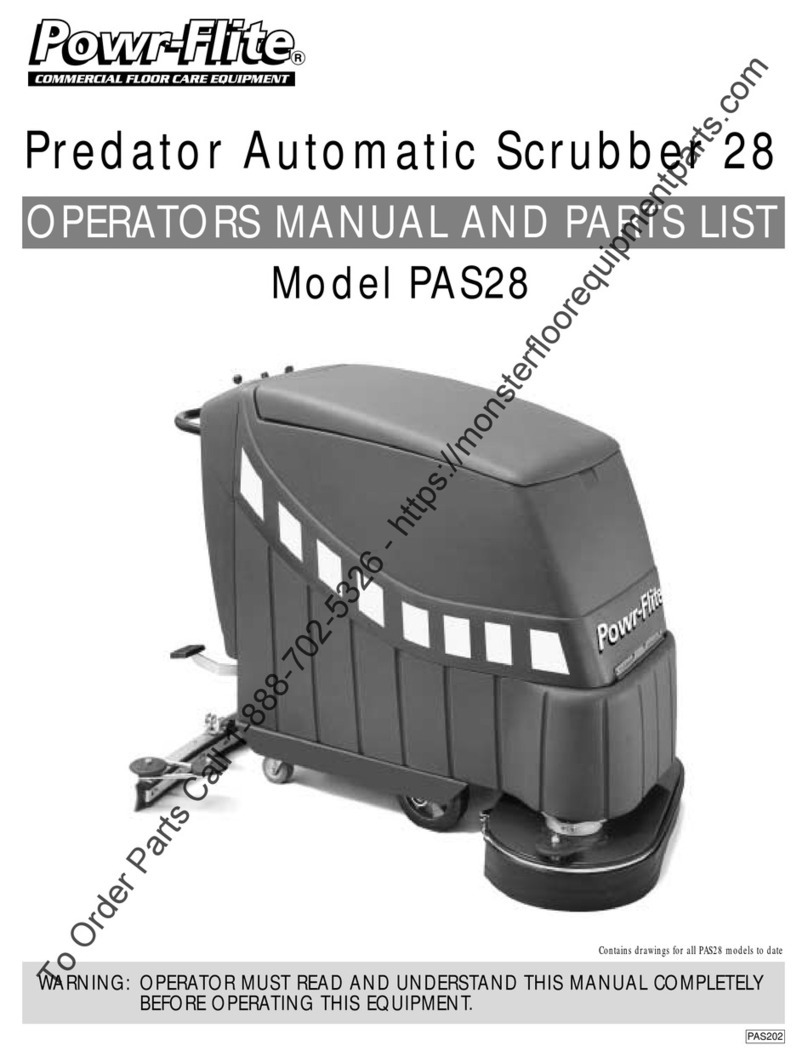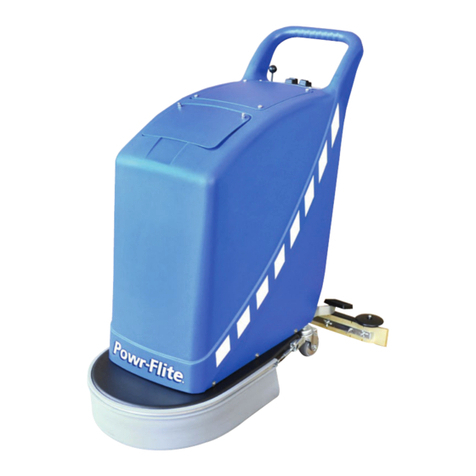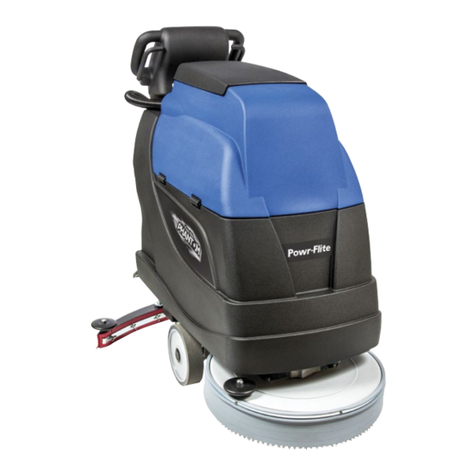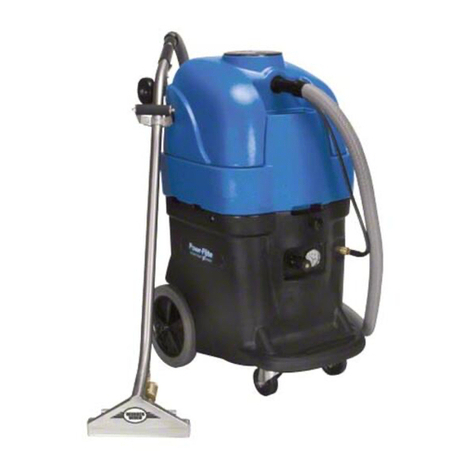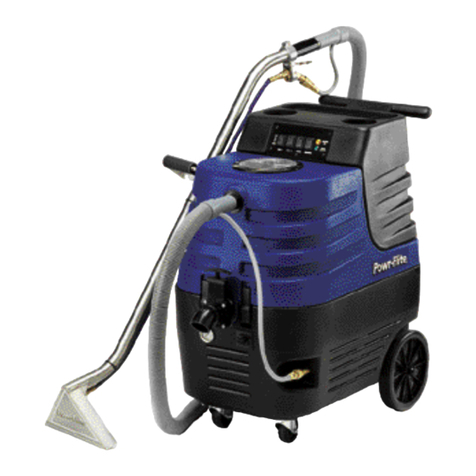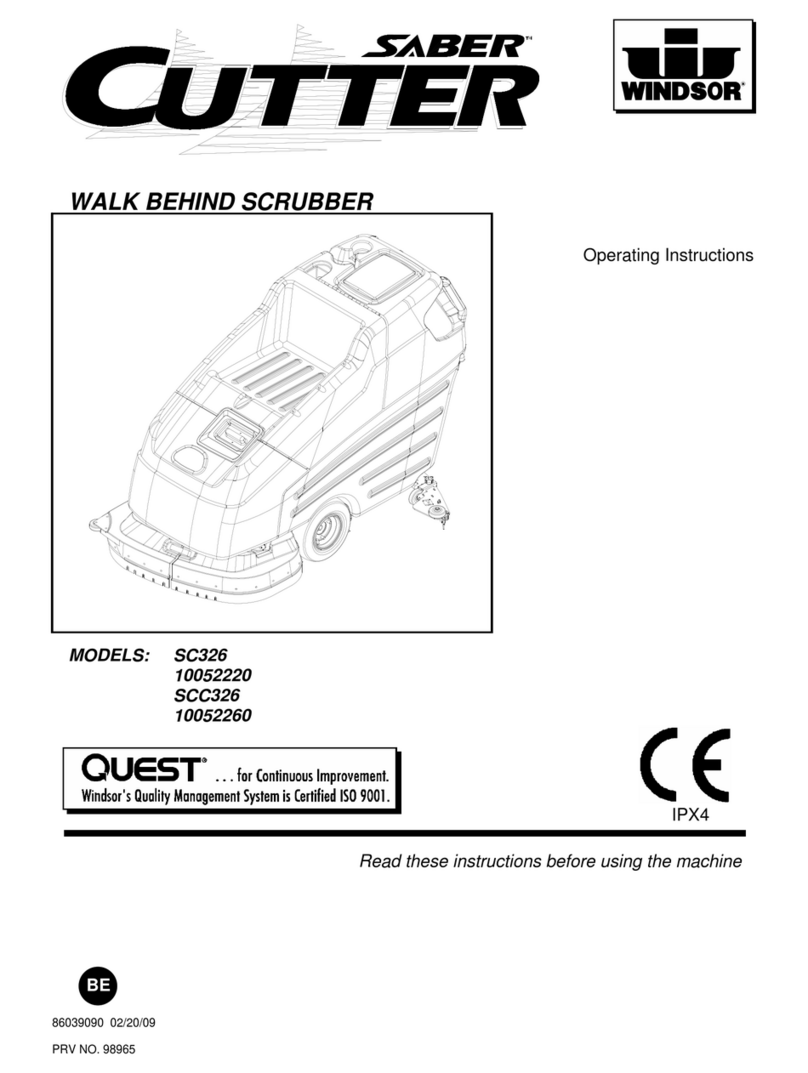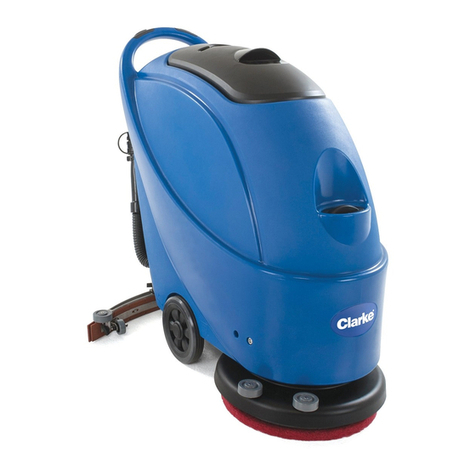- 6 -
neath the cover; apply a coating of grease (e.g. Vaseline) to the
terminals; connect the batteries as shown in diagram 1; make
sure the terminals are securely tightened. The battery charger
should be set up in the area where it is planned to leave the
machine for recharging. Use the cable supplied to connect to the
mains supply, normally 120 V 50 Hz; make sure that the supply
voltage is the same as indicated on the battery charger itself. To
charge the batteries connect the connector M5, which comes
directly from the battery compartment, to the battery charger con-
nector. The charger will automatically regulate the charging cur-
rent and will turn itself off when the batteries are recharged.
WARNING: The battery acid may give off harmful fumes. When
working near the batteries use protective glasses and clothes.
DO NOT PLACE ANY METAL TOOLS OF ANY KIND ON THE
BATTERIES. Recharging the batteries generates explosive gas. Do
not smoke, light flames or make sparks. Make sure the charger is
switched off before disconnecting. Recharge the batteries in a
well-ventilated area and keep the cover open.
WARNING: objects lying on the floor can be thrown at high speed
by the brushes, endangering people and/or property.
The area to be cleaned: In order to increase the effectiveness of
the detergent, the area to be cleaned should first be swept (manu-
ally or by machine) to remove loose dirt, which may quickly clog
up the suction circuit.
Powering up and operation:
• Turn off the battery charger and disconnect it from the
machine. Connect battery cable to machine.
• Turn the key switch, M6, to position 1 and press buttons M7
and M8;
• Lower the brush by pressing pedal M9;
• Lower the floor wiper by pressing pedal M3;
• Regulate the flow of detergent to a minimum using knob M12;
• Press lever M10, the machine will go forward, keep press the
button M5, the machine will go back-ward. Releasing M10
to stop the machine
• Regulate the forward speed with potentiometer M11;
• Finally, use lever M12 to regulate the dosage of detergent
according to the amount of dirt and the speed of the machine.
Particularly dirty floors: Certain floors or environments require
particular attention or even a second pass with the cleaner.
In this case you should make on pass with the wiper raised and
the brush in the working position; in this way the detergent
remains on the floor for longer and will dissolve the tougher dirt.
The second pass should be made with the brush and wiper low-
ered and at a slower speed.
WARNING
this machine is designed to work in closed industrial environ-
ments on level floors or on inclines no steeper than 2%. Do not
use flammable chemicals and/or explosives with this machine.
Floor wiper: Inspect and clean the floor wiper weekly and make
sure to restore it to its working condition. If the drying action
is not perfect after cleaning the wiper assembly, remove and
replace any worn rubber blades.
Brush: The brush must be kept in working order; to remove a
worn brush proceed as follows (follow the procedure in
reverse to reassemble):
• Turn off the machine (key switch in OFF position) and lift the
brush with the pedal provided (M9);
• Release the catch M15 and remove the rubber spray guard;
• Turn the brush to be re-moved by hand until the coils of spring
M19 are accessible;
• By closing together the coils of spring M19 with your fingers
(as if you where closing a pair of scissors) the brush will
free itself;
Waste Tank: clean the tank every week as follows: lift the cover;
remove the cover of the suction motor M1; remove the motor
stop ring M13 and remove the suction motor from its seat;
carefully clean the filter, net and sponge, and remove the dirt
which has accumulated in the tank.
Batteries: Check the electrolyte level and top up with distilled
water if drops below the level of the battery elements. Keep the
batteries clean and dry with anti-static cloths. Recharging must
be carried out with the cell plugs removed and the cover of the
machine opened so as to allow the gases generated to escape.
In confined spaces these gases can be explosive, so recharging
should be done in a well ventilated area.
